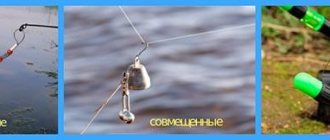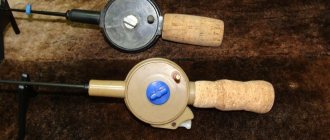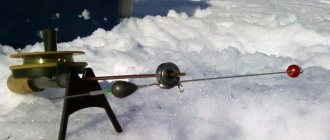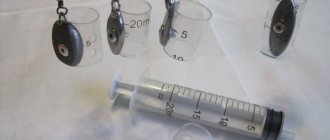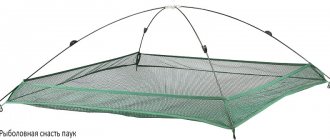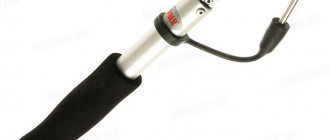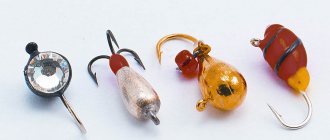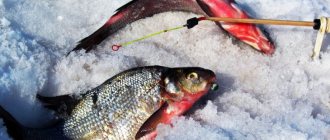Fishing in winter differs from summer: fishing at low temperatures is less tolerated by anglers, the hole quickly becomes covered with a layer of ice, and fish behavior changes depending on the hunting season. Finding fish in winter is difficult: all prey is close to the bottom. For such cases, you can purchase it in a specialized store or use scrap materials to make a nod for a winter fishing rod with your own hands, which can easily cope with this problem.
Why do you need a nod?
The ability to quickly respond to a bite and control the vibrations of the bait are functions of the nod that increase the chances of a catch. The nod signals the fisherman about a bite. In winter, fishing gear experiences harsh weather conditions: materials must be resistant to temperature changes, withstand numerous bends and not deform.
Requirements that the gatehouse must meet:
- resistance to natural reactions (wind, snow, humidity);
- high wear resistance (to minimize replacement frequency);
- low cost;
- availability of materials for installation;
- the ability to monitor bait wiring.
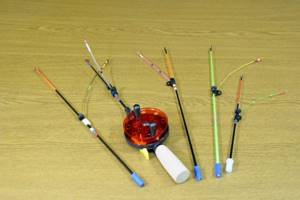
Making a nod for a winter fishing rod that will suit individual fishing conditions, the size of the prey, and the nature of the bait is not difficult. It is enough to stock up on the necessary materials and show imagination and dexterity.

Method 3: nod from a clock spring
Remove the spring from the clock. It looks like a spiral. Align the spiral. One spring is enough for 2 nods. The spring material is flexible and thin steel, ideal for nodding. He turns out to be very sensitive. It can also be used for winter fishing. The spring nod is attached using threads, as in the first case. A wire ring is made at the end. It is secured using a thermal tube.
Here are a few options for making a nod. In my opinion, the most practical and aesthetically pleasing one would be made from a spring. What did you make the nods from? Tell us in the comments.
Source: spinning-club.ru
Choosing a nod for a winter fishing rod
To choose the right winter fishing rod, you need to decide on the bait and type of fishing. A specific signaling device is suitable for each bait. The rigidity of the guard depends on the material used, thickness and length.
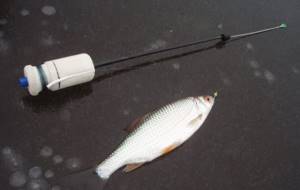
The design of the nod includes three components:
- the basis is a thread of lavsan, etc.;
- the rubber washer is the attachment point to the whip;
- The role of a signaling device is performed by a strip of paint.
Method 2: nod from the knee of a telescopic fishing rod
If you have a broken knee or part of it from a telescopic fishing rod, then it can be used to make several nods. Several chips 2-3 mm thick and 25-30 cm long are broken off from the form, as in the first case. In this case, it is important to obtain solid and sufficiently elastic nods. The edges are processed with a file and fine sandpaper. It is necessary to check the nods for cracks and chips. They shouldn't exist.
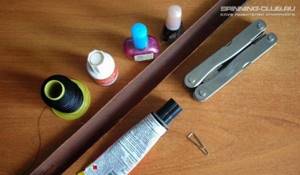
The nods can be painted with fluorescent and water-repellent paint. In the dark they will be clearly visible when fishing.
How to attach a nod to a spinning rod?
The mounting option is the same as in the case of the feeder tip. Instead of threads and glue, you can use electrical tape. This method of attaching the nod will allow you to more quickly replace the tip.
Materials for making nods
Nods made of steel plate are the most popular type of alarms used by fishermen. At the end of such equipment there are cambrics. One of the positive properties that a nod made from this material has is the ability to adjust to fit the weight of the bait and withstand the wind. The disadvantages include the lack of adjustment of jig vibration and low service life.
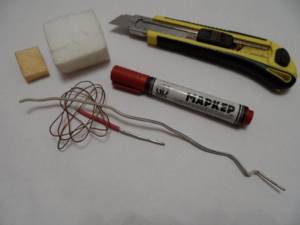
Lavsan nods are made of polymer material, which is thin and durable even when exposed to low temperatures. They are very sensitive, reacting to the slightest touch of fish on the bait. They are not able to withstand heavy weight due to their small thickness, so they are not suitable for lure fishing.
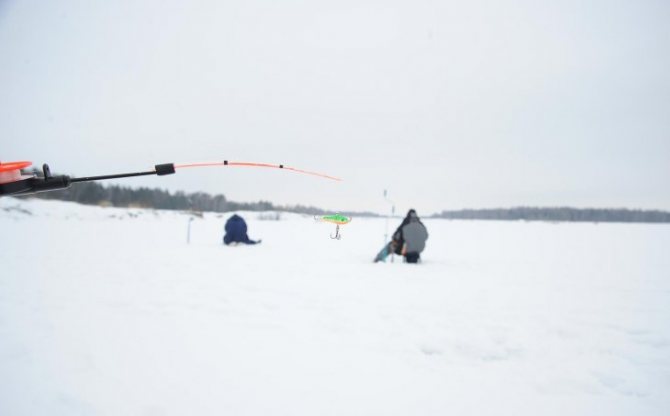
Boar bristle nods are not particularly popular among fishermen, but at shallow depths or in still water this type of nod is most suitable. They have excellent resistance to strong winds due to the light of a small cross-section, but in severe frosts they quickly become unusable.
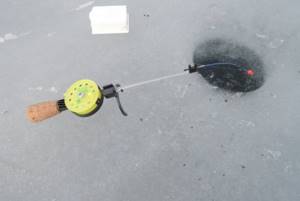
Nipple rubber nods are used extremely rarely due to the material they are made of: in the cold it loses its elasticity and freezes when it gets wet.
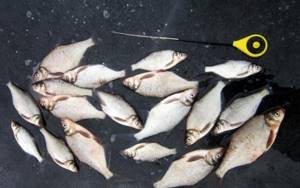
In addition, wiring with a rubber nipple nod gives poor results and resembles shaking rather than playing. They are used in cases where a more suitable signaling device is not at hand.
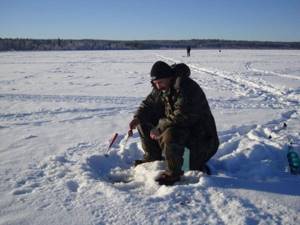
Carbon fiber nods are made from material intended for the production of float rods and have earned the trust of fans of reelless fishing. They resist the wind perfectly and accurately indicate bites. Disadvantages include fragility, but manufacturing technologies are developing, and the future lies with this type of nod.
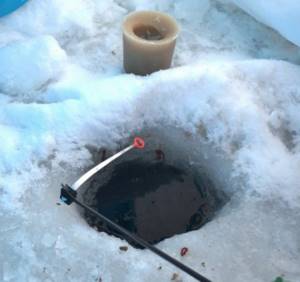
Gear device
The nod for a summer fishing rod is mounted on one of the types of tackle described above. Bolognese types of fishing rods are equipped with inertial reels with low mass and without any type of additional functions. It is enough to have only a stopper in the mechanism; otherwise, the reel serves only to store a supply of fishing line. The fly tackle is equipped with a miniature foam reel, which is attached to the last knee of the blank with an elastic band. As in bologna, the reel plays the role of storage. The rest of the equipment does not depend on the type of gear and consists of a monofilament line with diameters from 0.15 to 0.2 mm, the nodding accessory itself, complete with its attachment to the quivertip of the rod and the bait. In installations, a combined artificial bait is used in the form of various types of jigs with different loads.
Important! The bait is tied directly to the fishing line, without swivels or fasteners.
Particular attention should be paid to the use of equipment associated with the difference between rods.
Important! It is more convenient to fish with fishing rods and reels from a boat, and it is more comfortable to work with fly gear from the banks and into wades.
DIY nod for winter fishing
Fans of fishing in winter consider making nods as a hobby and a desire to create a multifunctional signaling device for themselves.
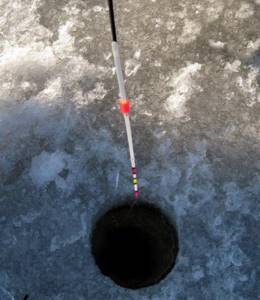
There are many ways to assemble a winter fishing rod with a nod, however, each self-made guard will have its own characteristics, advantages and disadvantages of use.
- nod made from a clock spring;
- nod from X-ray film;
- nod made of lavsan;
- Shcherbakov signaling device;
- from a coiled spring;
- nod "cracker"
- nod "snot"
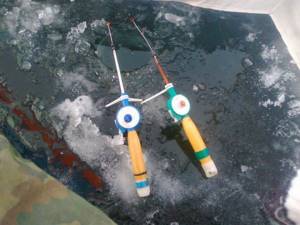
I make such nods like this
From the middle of the bottle I cut a strip of the required width. Usually it is 5-6mm. I always cut along the bottle, but if you cut across, then such a nod with your own hands will work worse.
Using a heated needle, I burn two holes in the strip to allow the fishing line to pass through. A hole with a diameter of about a millimeter - one from the edge of the strip, the second closer to the middle.
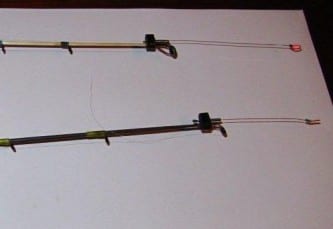
Fishing with a rod with a side nod
Having made a summer side nod and equipped the fishing rod with it, they look for places suitable for hunting, trying to approach promising points from the leeward side for a better view of the operation of the alarm. Based on the forces of the current, they select a load of bait and begin work on catching fish, the tactics of which and the baits used will be discussed in separate parts of the article.
Fishing tactics
The mounted jig is fed into the fishing zone, lowered to the bottom and pausing for a second. After a pause, the bait is moved along the bottom, which causes a cloudy spot to rise, which additionally attracts fish. In the absence of bites, they begin to raise the bait stepwise to the surface of the water, making stops at every 30–50 cm of the level and carrying out play of varying intensity. Each point is fished in two cycles and, if there are no bites, they move to a new place. The bite itself is expressed by a clearly visible bend of the signaling device, after which you need to hook the trophy and lift it with the rod.
Nozzles
The attachments are heavy jigs of various types and shapes. As a rule, 3–5 gram nozzles are selected for the operating conditions of such equipment. In terms of color, dark shades of natural colors, gray, black, brown, copper, are more effective for open water fishing. Bright and shiny winter jigs alert fish in the summer and there are much fewer bites on them.
Important! When fish activity is low, adding bloodworms significantly activates the bite.
The hooks of a fishing tool must have an elongated shank and a much higher number according to their classification than the winter versions. Fishing points between thicket openings can be carried out using weighted and heavy artificial fly flies. They select options with fluffy but short plumage, performing a leisurely game with heavy stretches, carrying out vertical movements.

